By David Cappaert and Brooklyn Richards, March 2024
In the field of restoration ecology, insects are broadly recognized as beneficial to native ecosystems. Pollinators, of course, are extremely beneficial—but so are the many other insects that participate in the complex food web that supports ecosystem health and benefits. There is an aggravating exception in the case of the checkermallow species (Sidalcea spp).
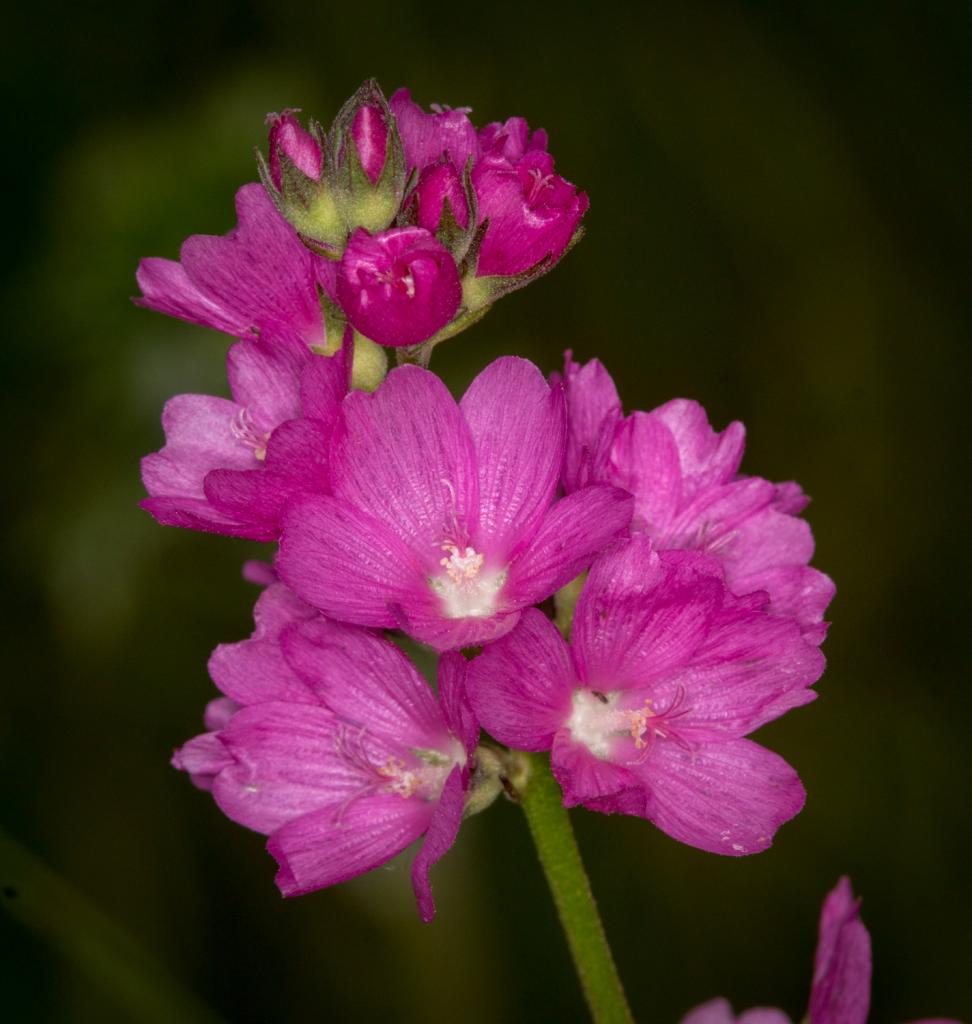
The showy pink flowers of checkermallow (Sidalcea) appear frequently in prairie restoration projects. The 30-odd species of checkermallow are all native to the West. In the Willamette Valley, we plant Rose checkermallow (S. virgata), Nelson’s checkermallow (S. nelsoniana), and Meadow checkermallow (S. campestris). If you want to propagate any of these subspecies, the first step is to harvest seed for next year’s planting and store them in a cool, dry place. However, if you check your seed collection in a couple of weeks. . . you may make an unpleasant discovery—that the seeds are crawling with tiny weevils, which have emerged after devouring the seed as larvae.

The culprit is the Checkermallow weevil (Macrorhoptus sidalceae), a specialist in devouring Sidalcea seed. Seed predation by this pest is a long-standing issue for IAE as well as for native plant nurseries like Heritage Seedlings, which cultivates large stands of checkermallow for seed. Lynda Boyer, Staff Biologist of Heritage Seedlings, relates:
We lose HUGE amounts of crop seed of all three checkermallow (Sidalcea spp.) we grow. I have had to give up on most of the fields for the West Eugene Wetlands, and gave up completely on a Nelson’s checkermallow field intended for IAE a few years ago. I lose at least 50% of my malviflora [Rose checkermallow, S. virgata] and campestris [Meadow checkermallow] crops [every year].
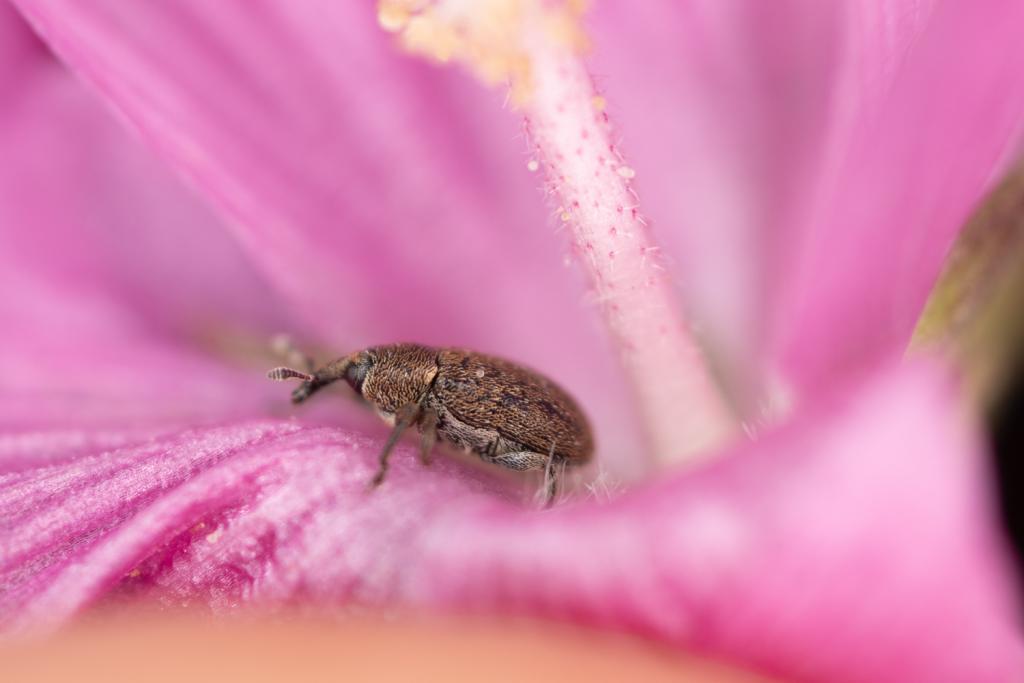
It gets worse. Our colleague Susan Waters of Quamash EcoResearch monitors the endangered Wenatchee Mountains checkermallow (S. oregana subsp. calva) in eastern Washington. She finds a rate of 75 to 99 percent seed predation among populations—and this, for a plant on the brink of extinction. While this is undoubtedly bad news for prairie restoration efforts, it is truly an interesting case-study for an entomologist. As an entomologist, you want to find out (1) what species are involved in seed predation, (2) understand their biology, and (3) study how the weevils and plants interact. Perhaps most relevant to prairie restoration, you also want to consider factors that might suppress weevil populations, because you know that there will be insects that feed on the weevils—who prey on seed.
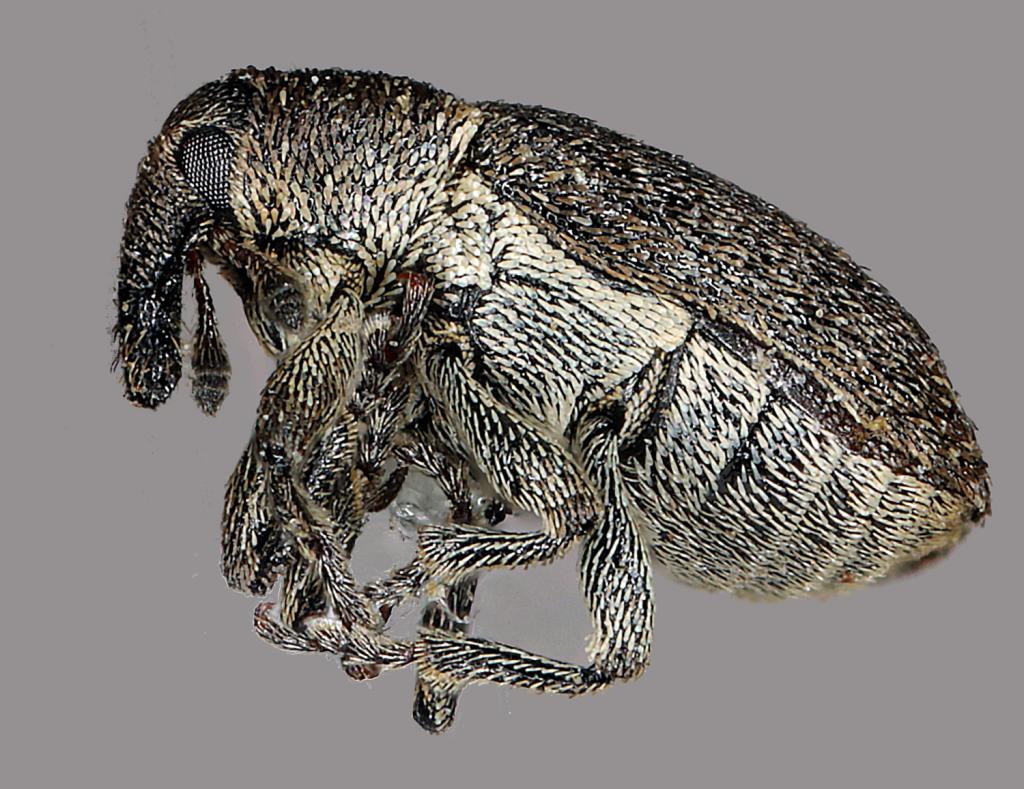
We’ve learned some things about checkermallow seed predation and the scale of the problem. For example, when we dissect small samples of seed to quantify the damage, we find high seed mortality in all five Sidalcea species we have examined. We have also kept large samples of seed to study over time—to see what common and rare insects emerge from the predation process. Besides the Checkermallow weevil (M. sidalceae), we find additional seed predators, such as Bean weevils (Bruchidae) and Anthonomus sp. (the genus that includes the infamous Boll weevil).
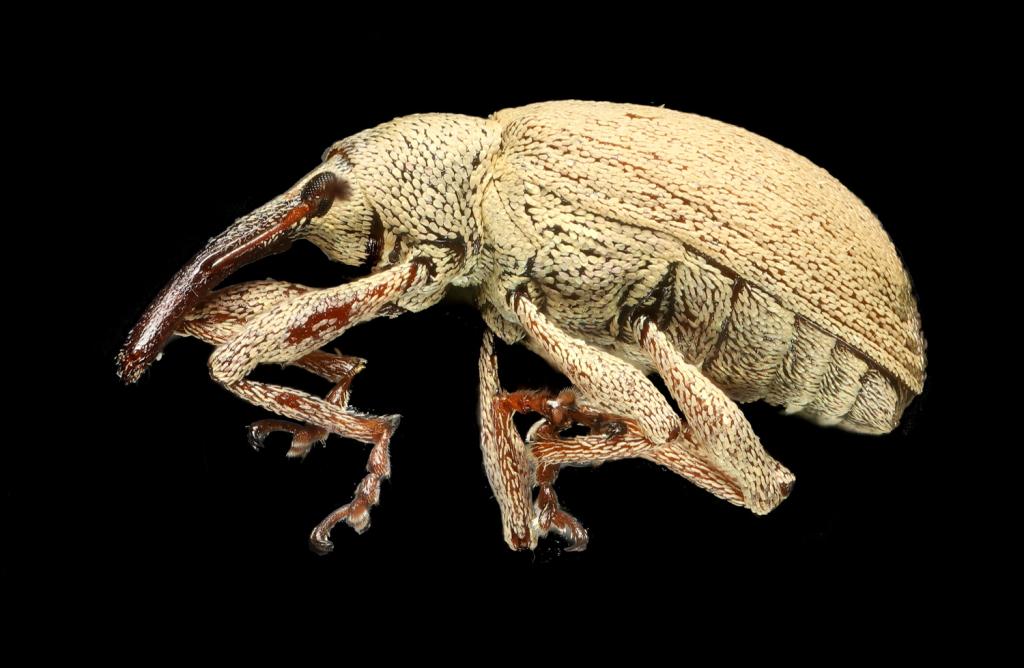
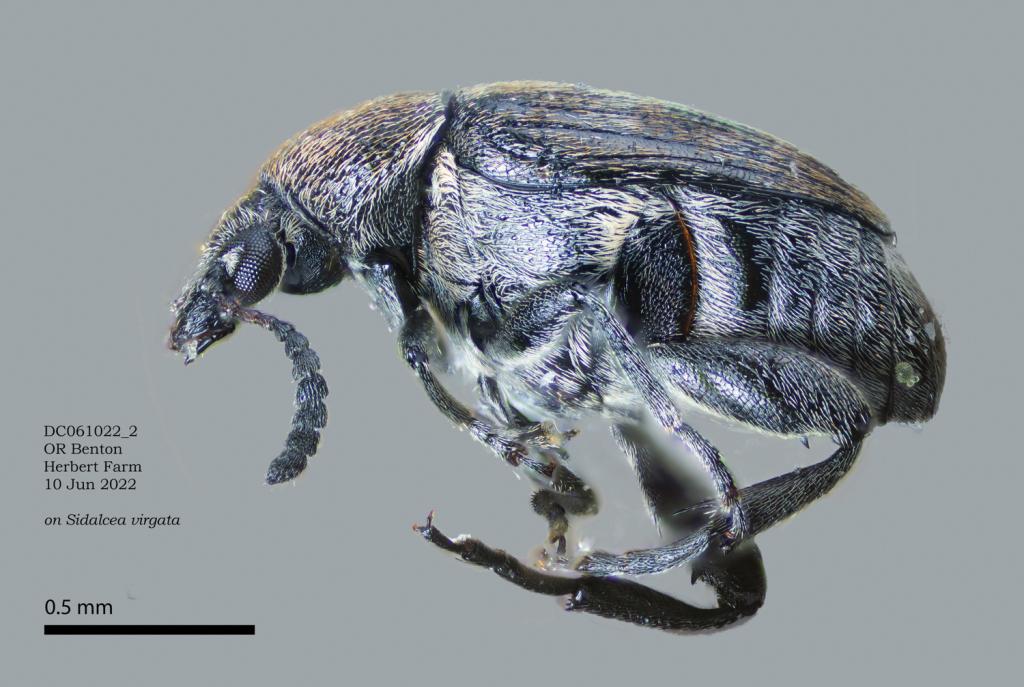
More interesting than the weevils yet are the wasps we’ve found. For most people, “wasp” suggests something large and threatening, like a yellowjacket. However, the vast majority of wasp species are tiny parasitoids that sting and lay eggs on the body of their host (like a weevil larva). Soon after, these eggs hatch and consume their host as larvae. In time, they emerge as adult wasps, ready to attack the next weevil generation.
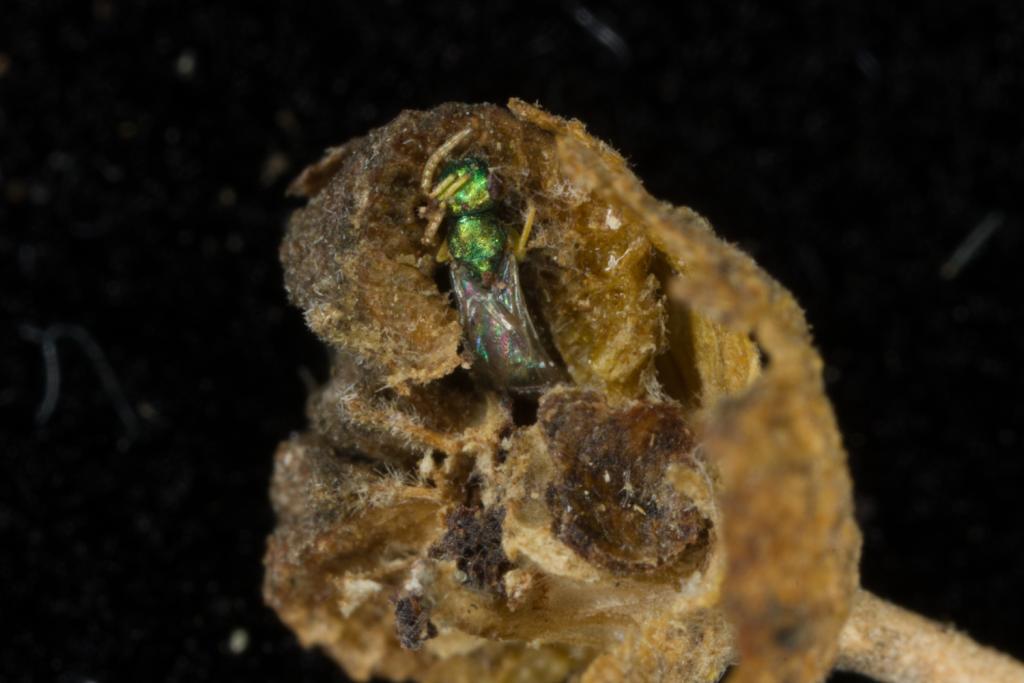
We find at least four species of parasitoid wasps in our Checkermallow seed. The metallic green Pteromalus sp. is the most common, occurring in every Washington and Oregon seed sample we have examined. We know that these wasps parasitize the Checkermallow weevil, because we have seen their larvae feeding on the weevil larvae. The three other wasp species we have observed, Eurytoma sp., a Eupelmid, and a Teleasinae, are either weevil parasitoids or . . . wait for it! . . hyperparasitoids (!)—species that parasitize other parasitoids, such as either the Pteromalus wasp, or each other.
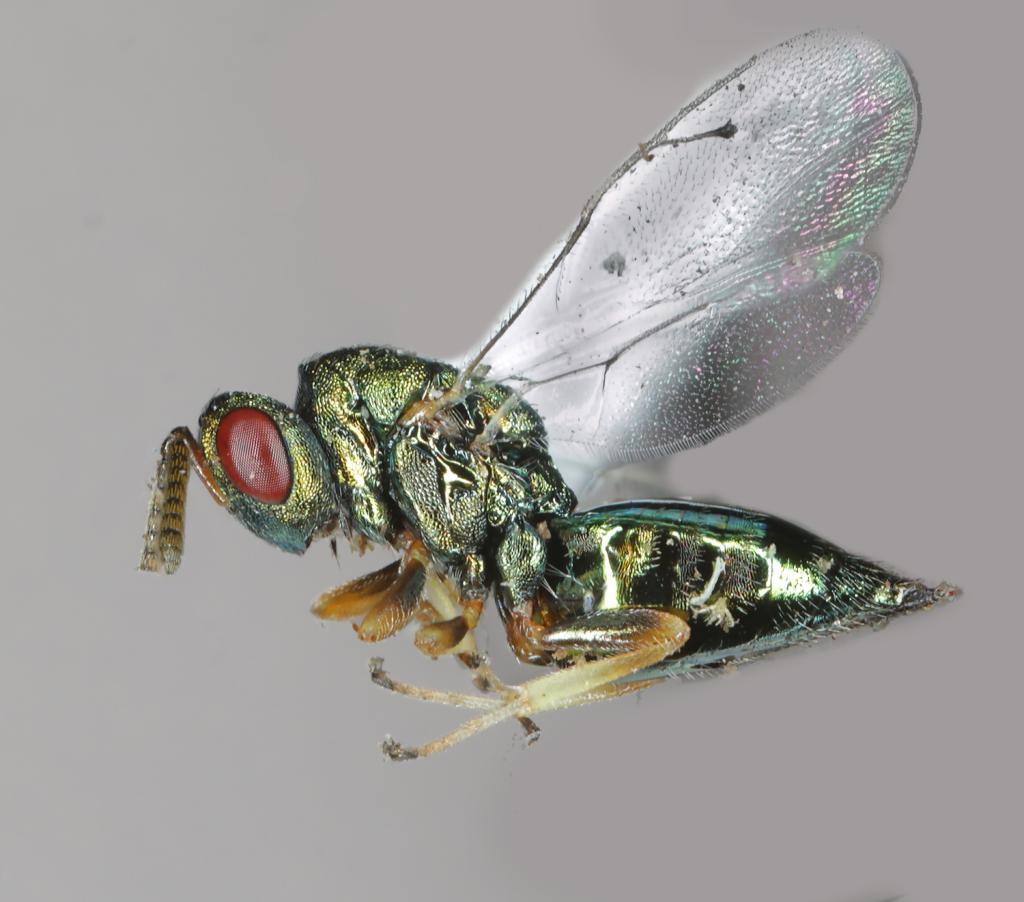
From the standpoint of the plant (Checkermallow), the sequence could be: weevil (bad)—parasitoid (good)—hyperparasitoid (bad). We have also observed cases in which a hyperparasitoid itself has a parasitoid—a hyper-hyperparasitoid (good!—from the perspective of the flower. . .). As we examine more Checkermallow species and sites that host the flower, the list of seed predators and their parasitoids grows, and there is no doubt that some of these predators will be new species.*
While parasitoids are fascinating in their own right from an entomological point of view, there are also practical reasons to study their role in the restoration supply chain. Weevils are a a serious impediment to plant conservation efforts across the United States.
Is there anything we can do to reduce seed predation in seed crops? Pesticides have been largely unsuccessful—in part because it is difficult to target a pest hidden within the seed. One possibility has presented itself: establish seed plants in remote locations, beyond the reach of colonizing weevils. For the highly endangered Wenatchee Mountains checkermallow (S. oregana subsp. calva), Susan Waters and researchers at the University of Washington are currently looking at an approach that would use an attractant—a distillate from common species, “eau-de-Sidalcea”—to lure weevils away from the plants and into traps.

What about the parasitoids? Do they suppress weevil populations enough to benefit Checkermallow species? Our limited data does not suggest a smoking gun; we haven’t seen weevil mortality exceed more than a few percentage points from the wasps. However, consider a scenario in which seed mortality is already 99 percent. Parasitism of only 1 percent of the weevils would reduce mortality to 98 percent—i.e., it would double the net seed survival. There is a reasonable possibility that among the numerous Checkermallow species that occupy a wide range of geography and habitats, there is a particularly effective parasitoid that exists—and might be deployed in a new location as a biocontrol agent for suppressing seed predators.
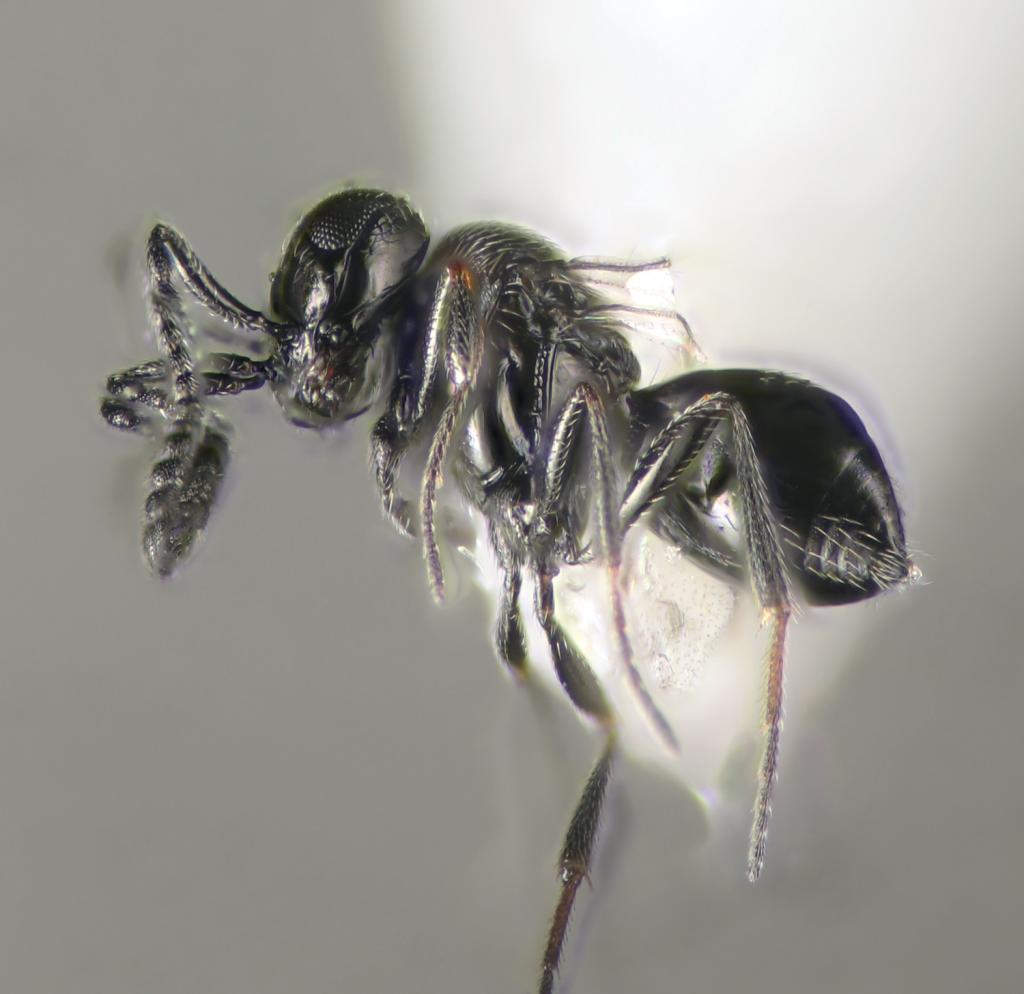
There is one more wrinkle to the story of Checkermallow and its seed predators, based on research by Melanie Gisler (Director of the Southwest Branch of IAE). Most checkermallow species have a curious mating system called gynodioecy, in which both female and male/female (hermaphroditic) plants can coexist in a population. The female-only flowers would seem to be at a disadvantage. They can produce no pollen that might fertilize another plant, whereas the hermaphroditic plants can. However, there is evidence that pollen has a downside—it is an attractant to Anthonomus weevils that feed on pollen before laying their eggs (ovipositing). Gisler found that female plants of Henderson’s checkermallow (S. hendersonii) can escape some of the seed predation faced by hermaphroditic plants.
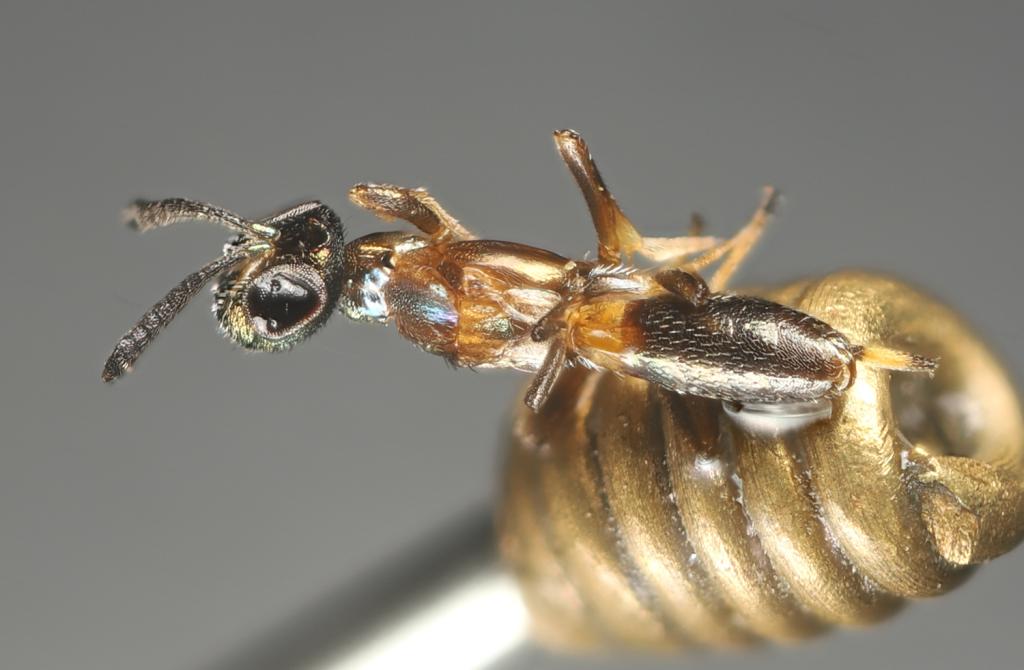
Of course there is more to learn about the details of Checkermallow biology and seed predation. The weevils themselves are native species, and deserve our attention and sympathy in their own right. OSU student Brooklyn Richards will be investigating some of the insect-mediated influences on this unique mating system, including sex-biased pollinator and seed-predator dynamics. Susan Waters will be exploring options for managing the weevils that threaten the endangered species she works to protect. So, stay tuned! Checkermallow, weevils, and wasps, oh my!
* Should we uncover a new species, our candidate for a scientific name would play on the prevalence of vowels in Latin names. So for a new species of Pteromalus: Pteromalus iaei.
